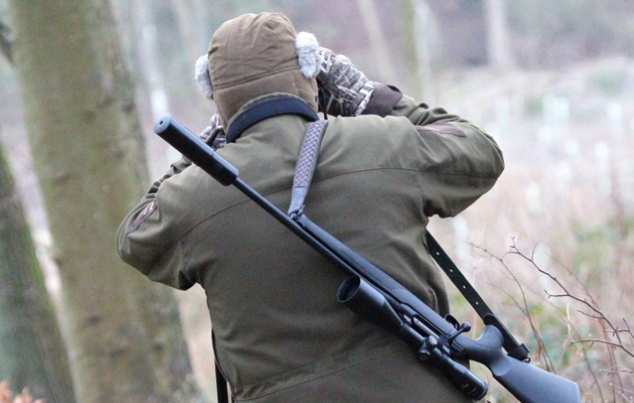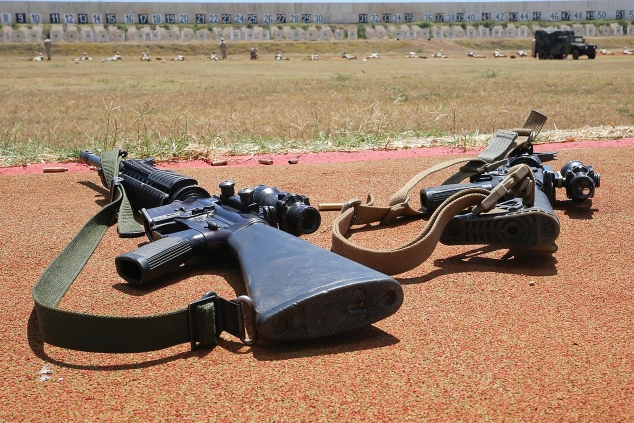Contents
When it comes to firearms, having the right accessories can make all the difference in functionality, comfort, and overall performance. One of the most overlooked yet essential tools for any firearm enthusiast is the sling for gun. More than just a strap, a gun sling is an indispensable accessory that offers convenience, enhances safety and improves shooting stability.
Today, we’ll explore the different types of gun slings, their features, and how to choose the right one for your specific needs. We’ll also share tips on using and maintaining it to make it last longer and stay reliable.
Why You Need a Sling for Your Gun

A sling for gun is not just an accessory—it’s a tool that offers numerous benefits.
1. Hands-Free Carrying
One of the primary purposes of a sling is to allow you to carry your firearm hands-free. Whether you’re trekking through rugged terrain or needing your hands for other tasks, a sling keeps your gun secure and accessible.
2. Enhanced Safety
A properly used sling ensures your firearm is always within reach while minimizing the risk of accidental drops. This is especially important in situations where quick action is required.
3. Improved Shooting Stability
Some slings double as stabilizing tools, allowing you to brace your firearm for more accurate shots. This feature is particularly valuable for hunters and precision shooters.
Types of Gun Slings
Not all slings are created equal. The type of sling you choose depends on your firearm, intended use, and personal preferences.
1. Single-Point Slings
- Design: A single-point sling attaches to the firearm at one point, usually near the receiver.
- Best For: Tactical shooting and short-duration use.
- Pros:
- Quick to attach and detach.
- Allows for easy transitions between shoulders.
- Cons:
- Offers less stability.
- Can swing freely, which may be inconvenient in tight spaces.
2. Two-Point Slings
- Design: A two-point sling attaches to the firearm at two points, typically the stock and barrel or handguard.
- Best For: General-purpose use, hunting, and long-duration carrying.
- Pros:
- Offers excellent stability.
- Versatile and adjustable for different carry positions.
- Cons:
- May take longer to adjust during high-pressure situations.
3. Three-Point Slings
- Design: A three-point sling features a third strap that runs along the body of the gun, creating a loop system.
- Best For: Law enforcement and military applications.
- Pros:
- Provides maximum security and retention.
- Allows for hands-free carrying in multiple positions.
- Cons:
- Can be complex to set up and adjust.
- May obstruct certain firearm controls.
4. Convertible Slings
- Design: These slings can switch between single-point and two-point configurations.
- Best For: Shooters who need versatility.
- Pros:
- Offers the best of both worlds.
- Adaptable to various shooting scenarios.
- Cons:
- May be more expensive than standard slings.
Features to Look for in a Gun Sling
When choosing a sling for your gun, consider the following features to ensure it meets your needs:
1. Material Quality
- Look for slings made from durable materials like nylon or leather.
- Ensure the sling can withstand wear and tear without compromising comfort.
2. Adjustability
- An adjustable sling allows you to customize the fit for different carry positions and body types.
- Quick-adjust sliders can be particularly useful for on-the-fly changes.
3. Attachment Mechanism
- Ensure compatibility with your firearm’s attachment points.
- Common options include QD (quick-detach) swivels, clips, and loops.
4. Padding
- Padded slings provide extra comfort, especially during long periods of use.
- This feature is a must for hunters or shooters carrying heavier firearms.
5. Weather Resistance
- Choose a sling designed to withstand the elements, especially if you plan to use it in outdoor or rugged environments.
How to Choose the Right Sling for Your Needs

The perfect sling depends on your firearm, intended use, and personal preferences. Here’s how to narrow down your options:
1. Consider Your Shooting Style
- For tactical or home-defence scenarios, a single-point or convertible sling may be ideal.
- For hunting or long-distance shooting, a two-point sling offers better stability and comfort.
2. Match the Sling to Your Firearm
- Ensure the sling is compatible with your firearm’s size, weight, and attachment points.
- Heavier firearms may require a padded sling for added comfort.
3. Test Before You Buy
- Whenever possible, try different slings to see which feels most comfortable and functional.
- Look for options with return policies in case the sling doesn’t meet your expectations.
Tips for Using a Gun Sling Effectively
Once you’ve chosen the right sling, proper usage is key to getting the most out of it:
1. Learn to Adjust Quickly
Practice adjusting your sling to accommodate different carry positions and shooting scenarios. Quick adjustments can be a game-changer in dynamic environments.
2. Practice Transitions
If using a single-point or convertible sling, practice transitioning your firearm between shoulders smoothly. This skill is invaluable in tactical situations.
3. Use the Sling as a Stabilizer
For precision shooting, wrap part of the sling around your forearm to create tension and stabilize your shot.
4. Regular Maintenance
- Inspect your sling regularly for signs of wear, such as fraying or weakened stitching.
- Clean the sling as needed, especially if it’s been exposed to dirt, moisture, or sweat.
Maintaining Your Gun Sling
A well-maintained sling will last longer and perform better. Here’s how to keep your sling in top condition:
1. Clean Regularly
- Use a damp cloth to wipe down nylon or synthetic slings.
- For leather slings, apply a leather conditioner to prevent cracking.
2. Check for Damage
- Inspect attachment points and hardware for signs of wear.
- Replace worn components promptly to avoid accidents.
3. Store Properly
- Avoid exposing your sling to prolonged sunlight or moisture when not in use.
- Store it in a dry, cool place to preserve its integrity.
Why Every Shooter Should Have a Sling
Whether you’re going through a dense forest, moving tactically through a training course, or simply needing to free up your hands, a gun sling is an invaluable tool. It improves safety and comfort and adds versatility to your shooting experience.
Investing in the right sling for your gun will help make sure you’re prepared for any situation. With proper care and practice, your sling will become an essential part of your firearm setup, making every outing more efficient and enjoyable.





Comments are closed.